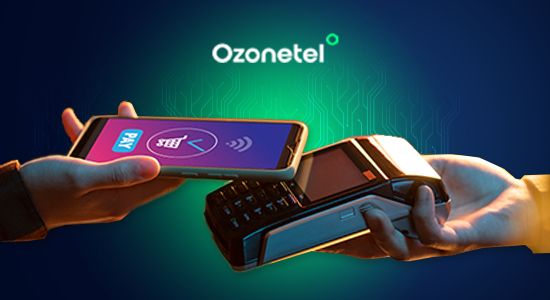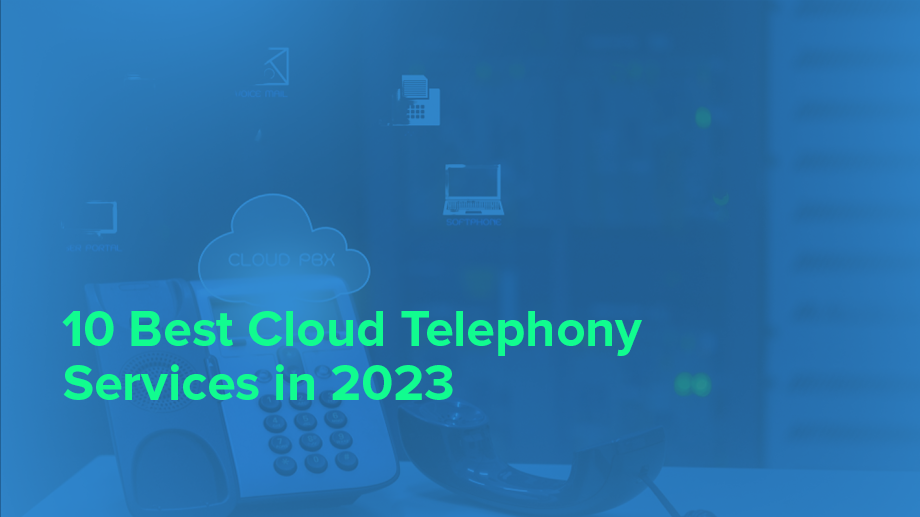- Resources
- Bridge Call: Meaning, Benefits & Applications in Call Centers
Bridge Call: Meaning, Benefits & Applications in Call Centers

Nothing disrupts a conversation like having to put someone on hold or transfer them to another line. It wastes time and often leads to miscommunication. Whether you’re in a call center, managing a remote team, or handling a client call, smooth communication is key.
That’s exactly what a bridge call solves. Instead of multiple disconnected calls, it creates a single, seamless conversation where everyone can speak and collaborate in real time.
In this guide, we’ll break down the meaning of bridge calls, how they work, and why they’re essential for businesses and customer service teams.
In this article, we will explore:
What Is Customer Obsession?
Customer obsession is about placing your customers at the core of every decision you make. It goes beyond simply satisfying their needs—it’s about actively working to improve their experience at every touchpoint, anticipating what they want, and addressing their concerns before they even raise them.
What is Call Bridging?
Call bridging allows multiple participants to join a single call using a shared virtual bridge. You can connect with team members, clients, or partners from different locations without needing separate calls. Unlike traditional three-way calling, a call bridge can support a large number of participants, depending on your system’s capacity.
How Does Call Bridging Work?
Call bridging connects multiple participants to a single call through a shared virtual space. Instead of making separate calls, you and other participants dial into a dedicated number to join a centralized conversation. The system manages the connection, allowing seamless communication between everyone on the call.
Here’s how call bridging works:
- 1.Dialing into the Bridge: You receive a dedicated dial-in number and, in some cases, an access code (a PIN required for security). Once you enter these details, you are connected to the bridge.
- 2.Managing Participants: The call bridge supports multiple participants at the same time. You can add or remove participants without interrupting the conversation.
- 3.Call Controls for Hosts: If you are hosting the call, you can mute participants, manage speaking permissions, or create breakout groups (smaller discussion groups within the main call). These controls help in managing large meetings efficiently.
- 4.Cross-Device Compatibility: You and other participants can join the bridge from different devices, including landlines, mobile phones, or VoIP (Voice over Internet Protocol) systems. This flexibility allows remote teams and clients to connect easily.
Benefits of Call Bridging
Call bridging makes communication seamless by connecting multiple participants on a single call, improving collaboration, efficiency, and security. Whether you’re managing remote teams, handling client calls, or coordinating internal discussions, it offers several advantages. Let’s discuss these benefits in a little more detail.
Simplifies Communication Across Locations
Call bridging allows participants to join from anywhere using a landline, mobile phone, or VoIP (internet-based calling). This flexibility is especially useful for businesses with remote teams, international clients, or employees spread across different locations. Instead of dealing with back-and-forth emails or scheduling multiple one-on-one calls, you can bring everyone together instantly.
For example, if you have offices in New York, London, and Sydney, coordinating meetings across time zones can be a challenge. With a bridge call, you can hold a single meeting where team members join from their respective locations without delays or logistical issues.
Reduces Costs
Holding in-person meetings requires travel, accommodation, and venue costs. Even local meetings involve expenses for office space, utilities, and refreshments. Call bridging eliminates these costs by allowing discussions to happen virtually, requiring only a phone or internet connection.
Most call bridging services offer subscription-based or pay-as-you-go models, making them affordable for businesses of all sizes. Instead of spending thousands on travel, you can invest in a reliable call bridging service that keeps your team connected without additional overhead.
Supports Large-Scale Meetings Without Quality Issues
Unlike traditional phone calls that might limit the number of participants, a call bridge can accommodate dozens or even hundreds of people without affecting call quality. Whether you’re hosting an all-hands meeting, a client presentation, or a multi-team discussion, everyone can participate without dropped calls or audio distortions.
For instance, if a company wants to make a major announcement to employees across multiple branches, a bridge call ensures that everyone gets the same information at the same time, without delays or miscommunication.
Improves Team Collaboration and Productivity
Call bridging enables real-time communication, helping teams make faster decisions. Instead of waiting for email responses or coordinating multiple schedules for in-person meetings, a quick bridge call allows teams to discuss issues, brainstorm ideas, and resolve problems on the spot.
Consider a project deadline where last-minute issues arise. Instead of exchanging long email threads or waiting to schedule a meeting, a project manager can initiate a bridge call with the necessary team members. Within minutes, everyone is aligned, decisions are made, and work continues smoothly.
Provides Strong Security and Confidentiality
Security is a major concern for businesses handling sensitive information. Many call bridging services provide encryption (which secures data from unauthorized access), passcodes, and authentication methods to ensure that only authorized participants can join the call.
This is crucial for industries like:
- Finance: Secure discussions about transactions, investments, or financial planning.
- Healthcare: Doctors and medical teams can discuss patient cases without violating privacy laws like HIPAA (Health Insurance Portability and Accountability Act).
- Legal services: Lawyers can conduct confidential client meetings without the risk of unauthorized access.
For example, if a legal team is discussing a high-profile case, a call bridge with password protection and encrypted audio ensures that no unauthorized party can listen in or access the conversation.
Works on Any Device Without Special Equipment
Unlike video conferencing, which often requires webcams and high-speed internet, call bridging works on landlines, mobile phones, or VoIP services. This makes it easier for participants to join, even in areas with weak internet connectivity.
If an executive is traveling and needs to join a critical business meeting, they can simply dial in using their mobile phone, avoiding disruptions or technical issues.
Allows Call Recording for Future Reference
Many call bridging services include a recording feature, allowing you to save conversations for review, training, or compliance purposes. This is especially useful for:
- Client calls: Keep a record of agreements, discussions, and action points.
- Training sessions: New employees can listen to past meetings for onboarding.
- Legal and regulatory purposes: Companies in regulated industries can maintain call logs for compliance.
For example, if a sales team is negotiating a deal with a client, recording the call ensures that every detail is documented, preventing miscommunication later.
Offers Call Management Controls for Organized Discussions
Hosts can manage calls efficiently with features like:
- Muting and unmuting participants: Prevent background noise and distractions.
- Breakout rooms: Separate discussions into smaller groups before bringing everyone back.
- Moderator controls: Allow only specific participants to speak, keeping conversations structured.
For example, during a company-wide call, a manager can mute all attendees except key speakers to ensure that the discussion stays focused without unnecessary interruptions.
Improves Customer Support Efficiency
Customer service teams can handle multiple calls simultaneously, reducing wait times and improving response rates. Instead of putting customers on hold or transferring them between departments, agents can quickly connect to supervisors or other teams via a bridge call to resolve issues faster.
For example, if a customer has a technical issue that requires input from multiple teams, a support agent can initiate a bridge call with the necessary departments, ensuring that the issue is addressed in one conversation instead of multiple calls.
10 Applications of Call Bridging in Call Centers
Call centers handle high call volumes daily, requiring efficient communication between agents, customers, and internal teams. Call bridging enhances operations by enabling seamless multi-party conversations, improving resolution times, and ensuring better customer service. Here’s how call centers use call bridging:
1. Streamlining Customer Issue Resolution
In a call center, agents often need input from supervisors or technical teams to resolve customer issues. Call bridging allows agents to instantly connect customers with the right personnel without transferring them through multiple departments.
For example, if a customer is facing a technical issue with a product, an agent can bridge a call with a technician instead of asking the customer to call a different department. This reduces frustration and speeds up resolution.
2. Handling Multi-Department Queries in a Single Call
Customers often have concerns that involve multiple departments, such as billing, technical support, and account management. Instead of transferring them multiple times, a bridge call allows all relevant departments to join in a single conversation.
For instance, if a customer is disputing a charge on their bill and also needs a service upgrade, the agent can bridge the call with both billing and sales teams. This ensures that the customer receives comprehensive assistance in one call.
3. Enabling Supervisor Support and Escalations
When an agent cannot resolve an issue at their level, call bridging allows them to add a supervisor or manager to the call without disconnecting the customer. This is particularly useful in handling escalations, where customers demand immediate attention from higher-level representatives.
For example, a dissatisfied customer threatening to cancel a service can be bridged with a retention specialist who offers a solution, such as discounts or alternative plans, to retain the customer.
4. Assisting New Agents with Real-Time Guidance
Call bridging is useful in training new agents, allowing them to handle live calls with mentor assistance in the background. Trainers or supervisors can be on the line without the customer knowing, offering real-time guidance to ensure proper issue resolution.
For instance, during onboarding, a new agent handling their first few calls can have a senior agent listening in and stepping in when necessary to prevent miscommunication or incorrect resolutions.
5. Improving First Call Resolution (FCR) Rates
First Call Resolution (FCR) is a key performance metric in call centers. The more issues resolved in the first call, the better the customer experience. Call bridging enables multiple experts to collaborate in real-time, reducing the need for follow-ups.
For example, instead of telling a customer, “We’ll get back to you,” the agent can bridge a call with the necessary department to resolve the issue immediately, ensuring a higher FCR rate.
6. Enhancing Quality Assurance and Call Monitoring
Quality assurance teams monitor calls to maintain service standards. Call bridging allows QA managers to join calls discreetly to assess agent performance and provide instant feedback when needed.
For example, if an agent is struggling with a difficult customer, a QA supervisor can join the call silently to observe or step in if the situation escalates.
7. Supporting Multi-Language Customer Service
Global call centers serve customers from different regions, often requiring language-specific support. Call bridging allows agents to instantly connect customers with language specialists or translators without redirecting them to another department.
For instance, if a customer calls a U.S.-based support center speaking only Spanish, the agent can bridge in a Spanish-speaking representative instead of making the customer call back later.
8. Managing Outbound Sales and Lead Conversions
Call bridging plays a vital role in sales and telemarketing by connecting potential customers with the right sales representatives. Agents can quickly bridge calls with senior sales executives or product experts to close deals faster.
For example, if a prospect is interested in a premium service package, a junior agent can bridge the call with a senior sales executive who provides a detailed pitch, increasing the chances of conversion.
9. Coordinating Internal Team Communication
Call centers require internal communication between agents, team leads, and managers for smooth operations. Call bridging allows quick internal discussions without disrupting ongoing customer calls.
For example, a team lead can bridge a call with an agent and a technical expert to discuss a process change before rolling it out to the entire team.
10. Reducing Call Handling Time and Wait Times
Long wait times frustrate customers and affect satisfaction scores. Call bridging minimizes delays by allowing agents to instantly involve experts rather than putting customers on hold or transferring calls.
For example, instead of keeping a customer waiting for a long hold time while checking with another department, the agent can bridge the call in real-time, allowing for a smooth and efficient resolution.
Industry Applications of Call from Browser
Browser-based calling can be applied across various industries, offering specific benefits tailored to their unique needs. Here are five industries where it can be highly effective:
Customer Support
In customer service, browser-based calling helps streamline communication by enabling support agents to make and receive calls directly from their web interface. This removes the need for separate phone systems and improves response time, leading to better customer satisfaction. It also allows for call recordings and seamless integrations with CRM systems for tracking customer interactions.
Sales
For sales teams, browser calling allows representatives to initiate calls directly from their CRM software, reducing the need to switch between different tools. This leads to more efficient lead management and better follow-up, as agents have immediate access to customer information during calls. Additionally, features like call tracking and reporting help sales teams optimize their outreach strategies.
Healthcare
In healthcare, browser-based calling ensures secure and HIPAA-compliant (Health Insurance Portability and Accountability Act) communication between medical professionals and patients. It allows medical offices and clinics to schedule appointments, follow up on patient inquiries, and conduct virtual consultations without relying on traditional phone systems.
Education
Educational institutions can use browser-based calling for seamless communication between teachers, students, and parents. This method supports virtual classrooms, one-on-one tutoring sessions, and administrative calls, all while keeping everything integrated into their existing digital platforms, making it easier to manage and track interactions.
E-commerce
For e-commerce businesses, customer communication is key to retaining customers and providing support. Browser calling allows support agents to resolve customer inquiries about products, returns, or payments quickly and efficiently. It can also be integrated into live chat systems to offer real-time support directly from a website.
How Call from Browser Helps in Improving Customer Service
Call from browser technology enhances customer service by simplifying communication, making it more efficient and responsive. With easy access to calls and integrated features, support teams can resolve issues faster and provide better overall experience for customers. Here’s how it helps:
- Quick Access to Communication: Agents can make or receive calls directly from their browser, reducing wait times and improving response speed.
- Integrated Support Tools: Customer service teams can access customer information, case history, and CRM data without switching between apps, leading to faster problem resolution.
- Personalized Service: Agents can easily identify customers and their issues through integrated CRM, helping to provide more tailored and accurate support.
- Call Recording and Review: Calls can be recorded for quality assurance or training, allowing agents to improve their performance and maintain consistent service quality.
Wrapping Up
Call bridging goes beyond just connecting people; it streamlines communication, reduces operational costs, strengthens security, and enhances productivity. Whether you’re managing remote employees, handling customer queries, or coordinating large-scale meetings, a call bridge ensures that conversations happen smoothly and efficiently.
By integrating call bridging into your communication strategy, you improve team collaboration, protect sensitive information, and make business operations more cost-effective—all without the hassle of travel or complex setups.
How call bridging can optimize your call center operations.
Frequently Asked Questions
A call web browser allows you to make and receive voice or video calls directly through your internet browser without requiring external applications. It uses WebRTC (Web Real-Time Communication) technology to enable seamless communication.
To make a call from a browser, you need a compatible platform or tool that supports browser-based calling. Log in, grant permissions for microphone and camera access, and initiate the call using the interface provided by the platform.
Yes, you can call someone from a browser using tools that support WebRTC. As long as the platform or tool is enabled for browser-based communication, you can connect with others via voice or video.







